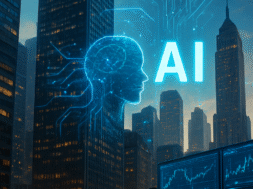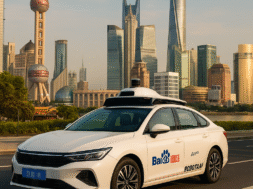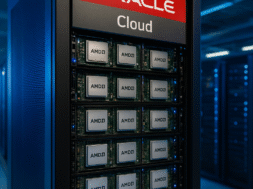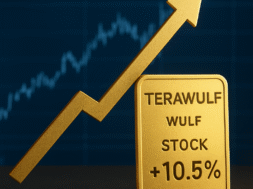
AI Investments Fuel U.S. Growth While Small Businesses Struggle to Survive
For Cameron Pappas, owner of Norton’s Florist in Birmingham, Alabama, the booming world of artificial intelligence feels far removed from his daily challenges.
While tech giants like Nvidia, Alphabet, and Broadcom continue to drive Wall Street to record highs and lift the nation’s GDP, many small and midsize businesses are fighting just to stay afloat.
Across industries such as retail, construction, and hospitality, business owners are feeling the squeeze from rising costs linked to the Trump administration’s tariffs, while consumer spending weakens.
“We’re watching every cost closely,” said Pappas, 36.
Norton’s Florist, a century-old business, generated $4 million in revenue last year selling flowers, plants, and gifts to local customers. To avoid raising prices, Pappas has been reworking floral designs to reduce costs.
“If a bouquet has 25 stems, cutting that by three or four keeps prices steady,” he explained. “It’s made us rethink how to deliver value without losing customers.”
The contrast between Main Street and Silicon Valley is striking. According to a recent JPMorgan Chase report, AI-related investments added 1.1% to U.S. GDP growth in the first half of 2025, outpacing consumer spending as a key driver of expansion.
The Commerce Department reported that U.S. GDP grew 3.8% in Q2 2025, rebounding from a 0.5% decline in Q1. Yet on the ground, manufacturing has contracted for seven straight months, and construction spending remains flat due to high interest rates and material costs inflated by tariffs.
Eight major tech firms — Nvidia, Microsoft, Apple, Alphabet, Amazon, Meta, Tesla, and Broadcom — now account for 37% of the S&P 500’s value, with Nvidia alone representing more than 7%. These companies’ soaring valuations have pushed the Nasdaq and S&P 500 to new highs, even as many traditional sectors lag behind.
Meanwhile, consumer-driven segments of the market — including retail and household goods — have seen growth of less than 5% this year. Target’s recent announcement of 1,800 corporate layoffs, its first major job cut in a decade, reflects growing pressure in the retail space, with its stock down 30% in 2025.
Experts agree that AI spending is reshaping economic data. Dr. Arun Sundararajan, an economist at NYU’s Stern School of Business, noted that “AI is clearly boosting the top-line numbers,” but warned that other parts of the economy are showing “more modest growth.”
Tech giants are doubling down on AI infrastructure. Nvidia recently unveiled a $100 billion investment in OpenAI, enabling deployment of 10 gigawatts of Nvidia systems — roughly the annual energy use of 8 million U.S. homes. AMD and Oracle have also benefited from partnerships tied to the AI surge, sending their shares sharply higher.
Still, not everyone sees this as sustainable. Some analysts question whether rapid AI spending could inflate the economy in the short term and risk a future correction.
The Real-World Struggle
Outside of tech, about one in four small business owners remain in “survival mode,” according to a KeyBank survey. Small enterprises contribute roughly 40% of U.S. GDP, yet face relentless cost pressures.
For Pappas, whose family has owned Norton’s Florist since 1921, tariffs have been especially painful — about 80% of cut flowers in the U.S. are imported from Colombia and Ecuador. He’s had to source flowers directly from growers to avoid costly distributor markups, a tactic he calls “tariff price management.”
Economists estimate that Trump’s tariffs will cost global businesses $1.2 trillion this year, with much of that passed on to consumers.
Consumer confidence is also deteriorating. A Deloitte survey found that 57% of Americans expect the economy to worsen in 2026 — the most pessimistic reading since 1997. Gen Z plans to spend 34% less this holiday season, while Millennials expect to cut spending by 13%.
Seasonal hiring has dropped to its lowest level since 2009, and new job creation has fallen 58% year-over-year, according to Challenger, Gray & Christmas.
Even big names are cutting back: Starbucks is restructuring, closing stores, and laying off 2,000 employees this year, while Wyndham Hotels reported disappointing results amid a “challenging macro backdrop.”
Even within the tech sector, layoffs persist. Microsoft and Salesforce have trimmed thousands of roles, citing AI-driven efficiencies and organizational streamlining.
But experts caution against assuming AI can replace human efficiency overnight. Dr. Hatim Rahman of Northwestern University’s Kellogg School of Management noted that “AI isn’t plug-and-play — it requires time, adaptation, and cultural change.”
“The road to the future is going to be bumpy,” Rahman said. “Companies that invest strategically in both people and technology will ultimately come out ahead.”













